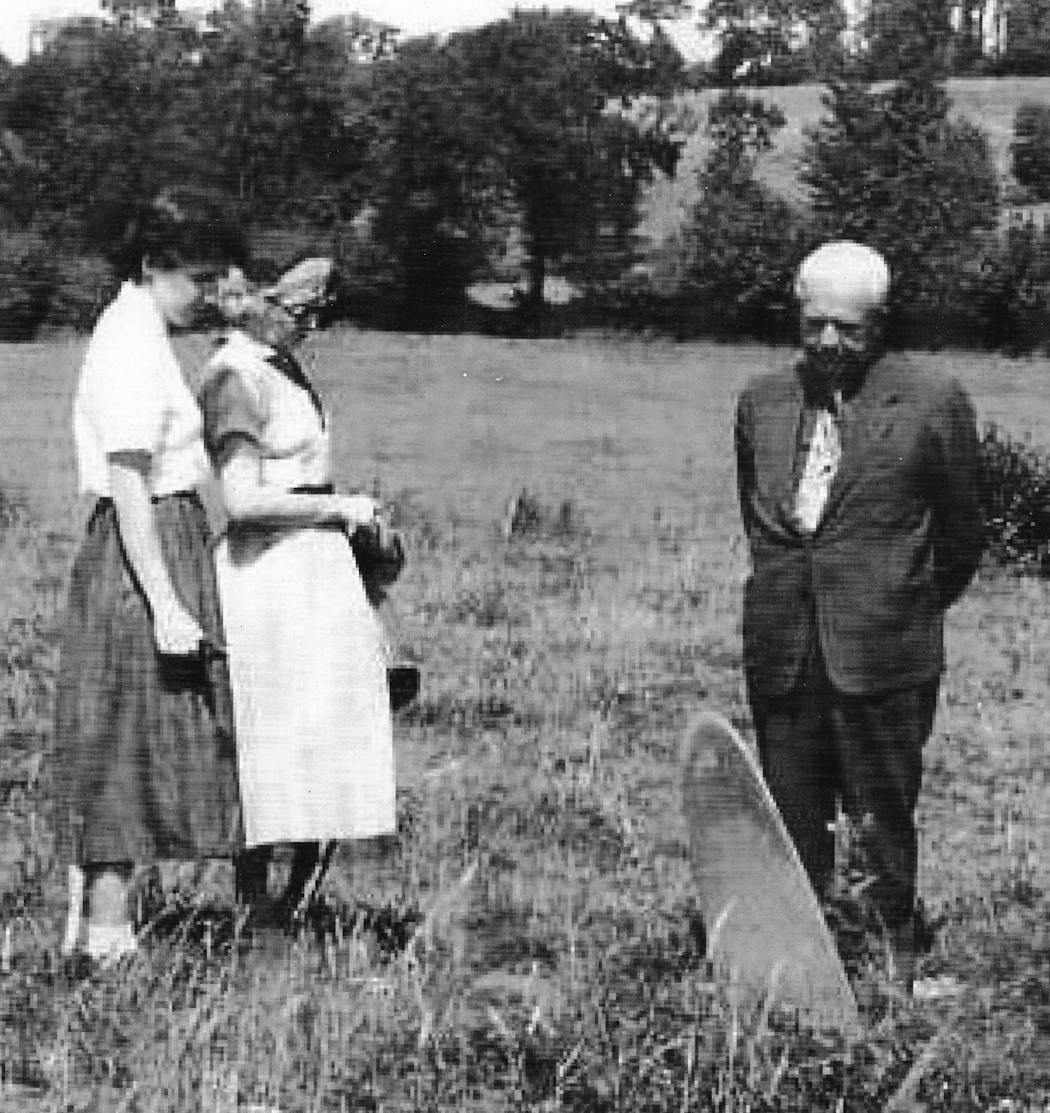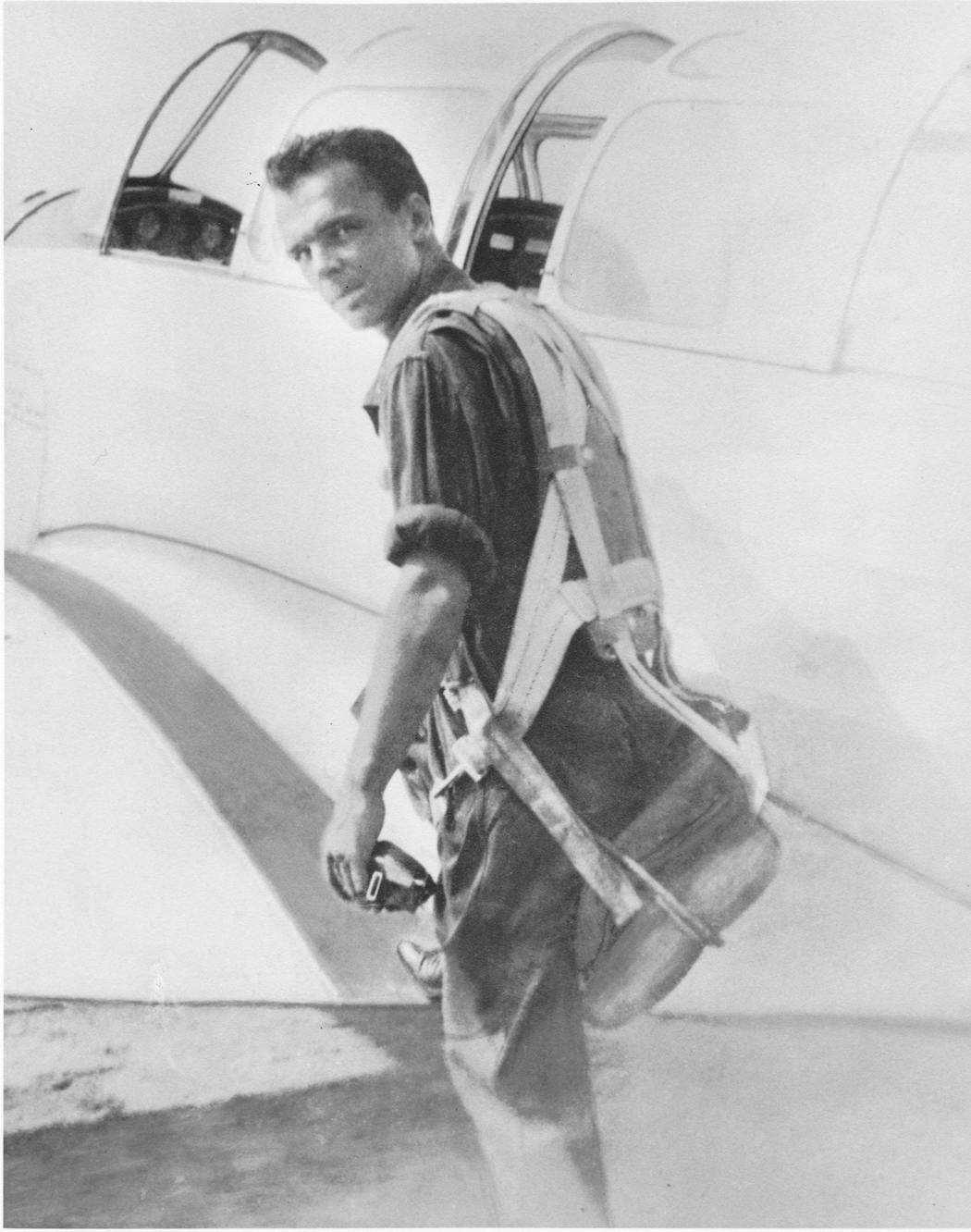Mary Donnelly was born a carpenter's daughter in the western Minnesota town of Benson in 1894. The second of six kids, she went on to marry Joe McGowan, who became publisher of the Swift County News in Benson, and raised three children. They moved to Arizona in the 1950s, where she died at 75 in 1970.
Those facts gleaned from a computer search fail to reflect the staggering sadness that, in some ways, defined Mary McGowan's days. Her big brother, Pvt. William Donnelly, was killed in action at the age of 27 in World War I, a month before the war ended in 1918. And the son she named for him, 2nd Lt. William McGowan, was killed in action at 23 on D-Day in World War II.
"She was the real hero," said her grandson, Paul Stouffer, 61, of Bozeman, Mont., in a phone call from France where he visited the grave of Donnelly at one American military cemetery and attended the burial of McGowan at another military cemetery 350 miles away.
Bill McGowan's P-47 Thunderbolt bomber was riddled by German anti-aircraft fire and crashed a few miles inland from Omaha Beach on June 6, 1944. His remains, finally identified at the crash site in 2018, were flown from an Air Force base near Omaha, Neb., to Omaha Beach for burial at the Normandy American Cemetery this month. Mary's great-grandson, Sean Slawik, was among 30 of her descendants on hand.
"I'd heard all the stories about Uncle Bill — and his Uncle Bill — but all that seemed way in the past and didn't seem real," said Slawik, 31, a St. Paul school teacher, on a call from Paris. "Standing here with so many crosses felt like, wow, he did make a sacrifice and it felt real."
Slawik's mother, former legislator and Maplewood mayor Nora Slawik, was McGowan's niece and Mary's granddaughter. "Considering how long it took, it brought closure to a page of history," Nora Slawik said from Paris.
McGowan's remains were declared "non-recoverable" in 1947; villagers said his plane burned for more than a day, and a farmer later found his dog tags. For decades he was listed among more than 1,500 service members on the Wall of the Missing at the Normandy cemetery.
A military team reexamined the crash site in 2010, and an excavation in 2018 uncovered teeth that were identified through dental records as McGowan's, along with a pin he had worn on his uniform. McGowan was "officially accounted for" on May 13, 2019, and his remains were slated for burial in 2020.
This month's ceremony, pushed back twice because of the COVID-19 pandemic, marked the first burial at the Normandy cemetery since 2018 and likely will be one of the last burials from the world wars in American cemeteries in Europe.
"Burials like these are quite uncommon, as you can imagine, but remain an important reflection of the nation's commitment to account for and honor every U.S. service member who has perished on foreign soil," Ashleigh Byrnes, a spokeswoman for the Virginia-based American Battle Monuments Commission, said in a statement.
Three generations of Donnelly and McGowan descendants have now made the trek to American cemeteries in France to remember their two fallen family members. In 1948, 24-year-old Patricia McGowan — Bill's sister and Nora Slawik's mother — traveled to Europe intent on finding her brother's crash site.
Patricia returned to France in 1953, along her sister, Mary Jo, then 21, and their parents Mary and Joe. They visited Donnelly's grave at the Meuse-Argonne American Cemetery near the Belgian border and McGowan's crash site, where they viewed his plane's propeller still lodged in the field.
Stouffer, Mary Jo's son, first retraced the wartime footsteps of his uncle and great-uncle in 1993 and returned in 2011, when the village of Moon-sur-Elle dedicated a memorial to McGowan in a park near the crash site. Many there believe McGowan crashed his burning plane in a farm field to spare civilian casualties.
In choosing to bury McGowan in France, Stouffer said the family followed the lead of his great-grandparents, who elected to have Donnelly buried in France instead of Benson. Joe died in 1963 and Mary followed him in 1970; their daughters Patricia and Mary Jo died in 1998 and 2016, respectively.
McGowan's burial on July 9, amid the cemetery's 9,400 American grave markers. was conducted with full military honors — including a roaring jet flyover, the playing of taps and presentation of his Purple Heart to the family.
"For me and my generation, a trip like this is so inspiring," Sean Slawik said. Added Nora: "It's been extremely moving to be here and remember that these two members of our family died in their 20s while we've had our entire lives to grow up."
Curt Brown's tales about Minnesota's history appear each Sunday. Readers can send him ideas and suggestions at mnhistory@startribune.com. His latest book looks at 1918 Minnesota, when flu, war and fires converged: strib.mn/MN1918.

Civil War group honors the last Union veteran buried in each Minnesota county

St. Cloud professor's book paints nuanced look at enslaved woman freed in Minneapolis

Paying overdue tribute to his grandmother, a Minnesota farmer recarves family history

Civil War officer brought formerly enslaved family to Minnesota





